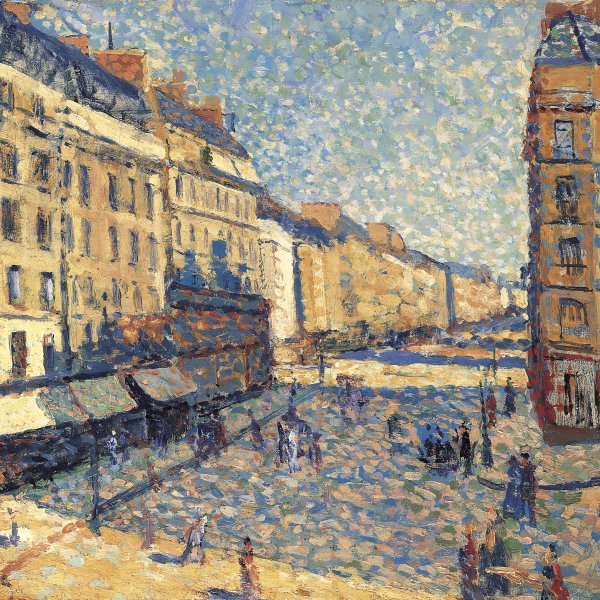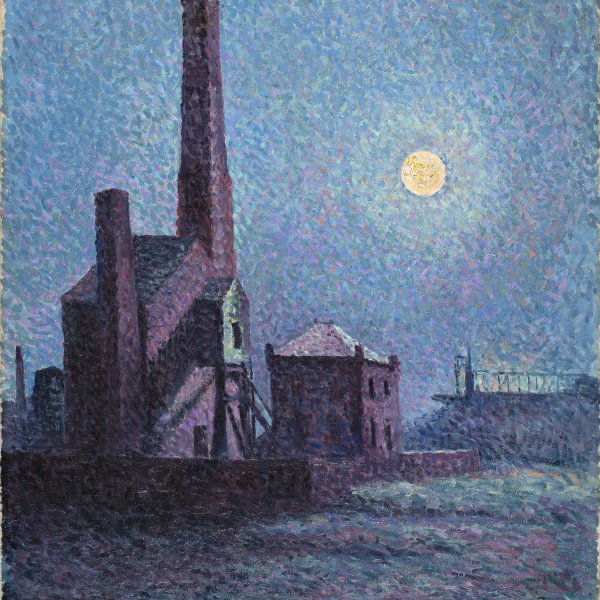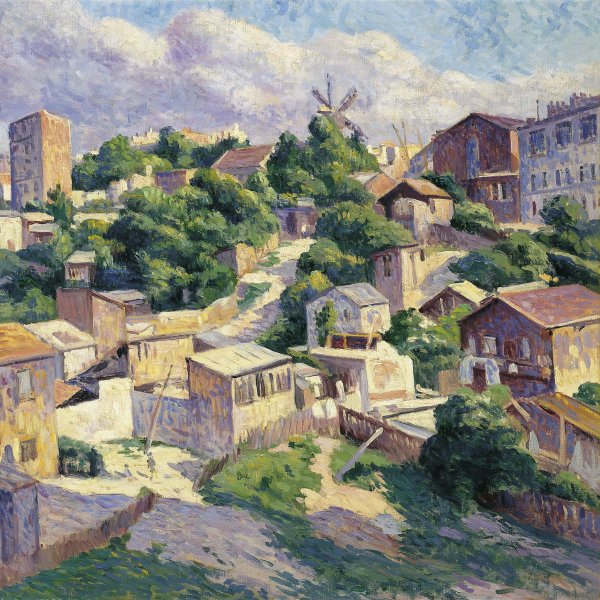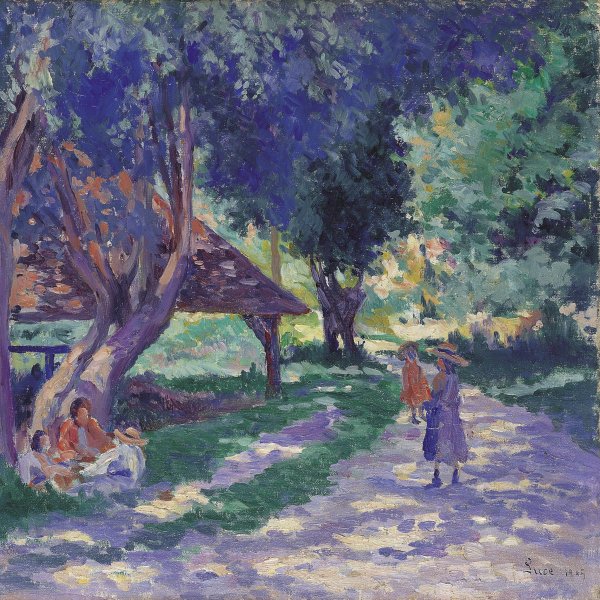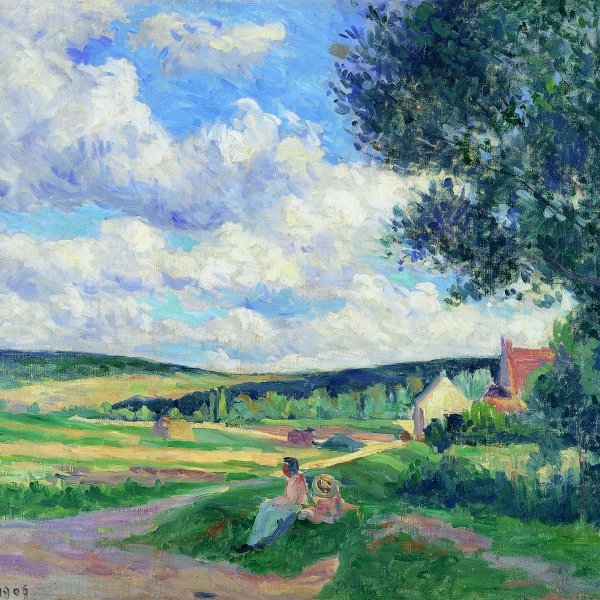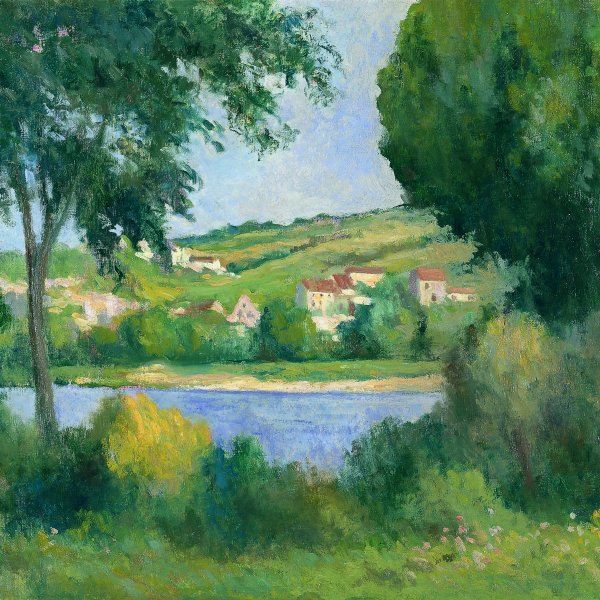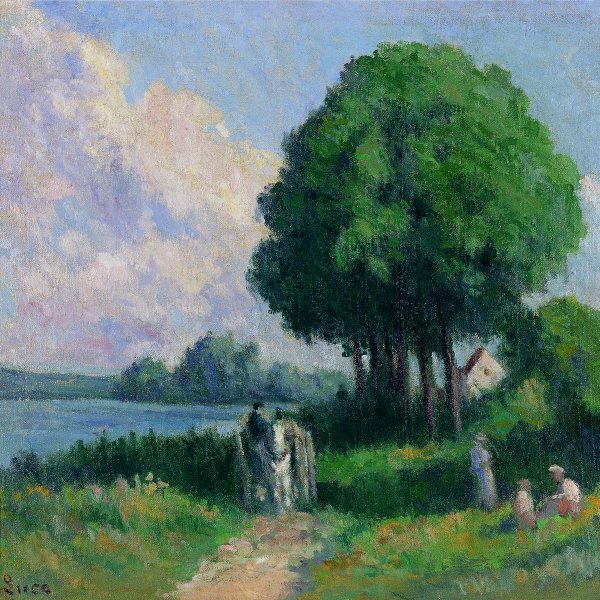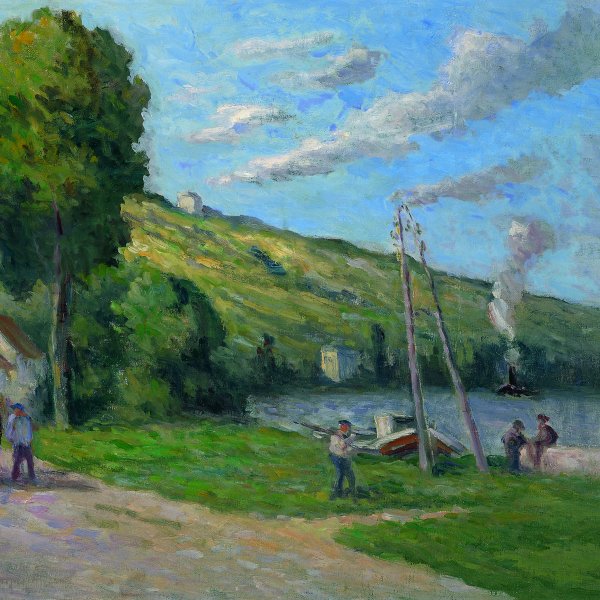Maximilien Luce
París, 1858-1941
Maximilien Luce was born in Paris on 13 March 1858. He began to study art, specialising in printmaking in Hildebrand's studio, where he completed his training in 1876. He then he started to work with Eugène Froment, engraving plates for publications. During his military service he continued in this field with Lançon and Froment and also attended Carolus-Duran's studio to paint. In the mid-1880s Luce became interested in Seurat's techniques. He held his first exhibition in 1887, showing seven works at the third Salon des Indépendants. From 1889 onwards Luce exhibited with some regularity in Brussels, first in the Salon des XX and after 1895 in La Libre Esthétique. In 1892 he visited Signac in Saint Tropez and in 1893 went to Brittany whose harbours and coastline would be the subject of his canvases.
Landscape dominates Luce's production. During the early years of the 20th century he painted portraits and floral still lifes, while he abandoned neo-Impressionist techniques in favour of a much freer handling. During most of his career he worked as an illustrator on a series of socialist and anarchist publications such as Père Peinard, La Révolte and La Voix du Peuple. In 1907 he travelled to the Netherlands with Kees van Dongen, visiting and painting several cities including Amsterdam and Rotterdam. Scenes set in furnaces, where he depicted the work of rolling-mill operators, welders and other working men, also occupy an important place within Luce's oeuvre. During the 1920s he painted landscapes of Paris and Rolleboise. In 1935 he accepted the position of President of the Société des Artistes Indépendants, succeeding Signac. Luce died in Paris on 7 February 1941.
Mar Borobia
Landscape dominates Luce's production. During the early years of the 20th century he painted portraits and floral still lifes, while he abandoned neo-Impressionist techniques in favour of a much freer handling. During most of his career he worked as an illustrator on a series of socialist and anarchist publications such as Père Peinard, La Révolte and La Voix du Peuple. In 1907 he travelled to the Netherlands with Kees van Dongen, visiting and painting several cities including Amsterdam and Rotterdam. Scenes set in furnaces, where he depicted the work of rolling-mill operators, welders and other working men, also occupy an important place within Luce's oeuvre. During the 1920s he painted landscapes of Paris and Rolleboise. In 1935 he accepted the position of President of the Société des Artistes Indépendants, succeeding Signac. Luce died in Paris on 7 February 1941.
Mar Borobia

